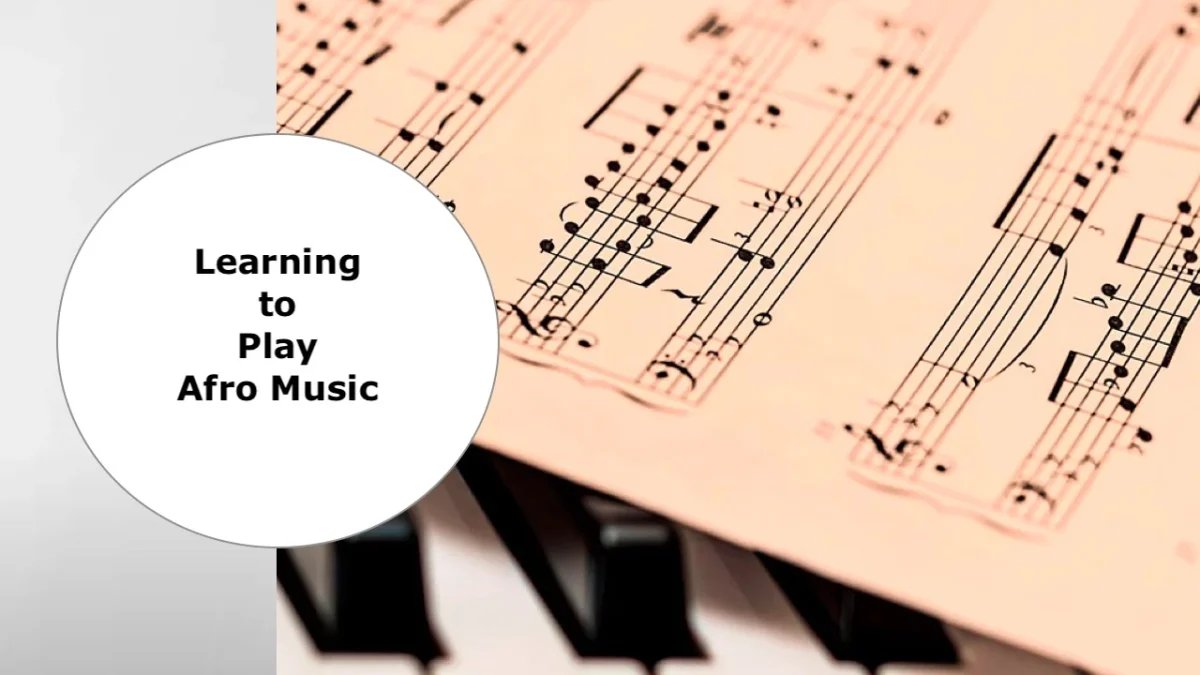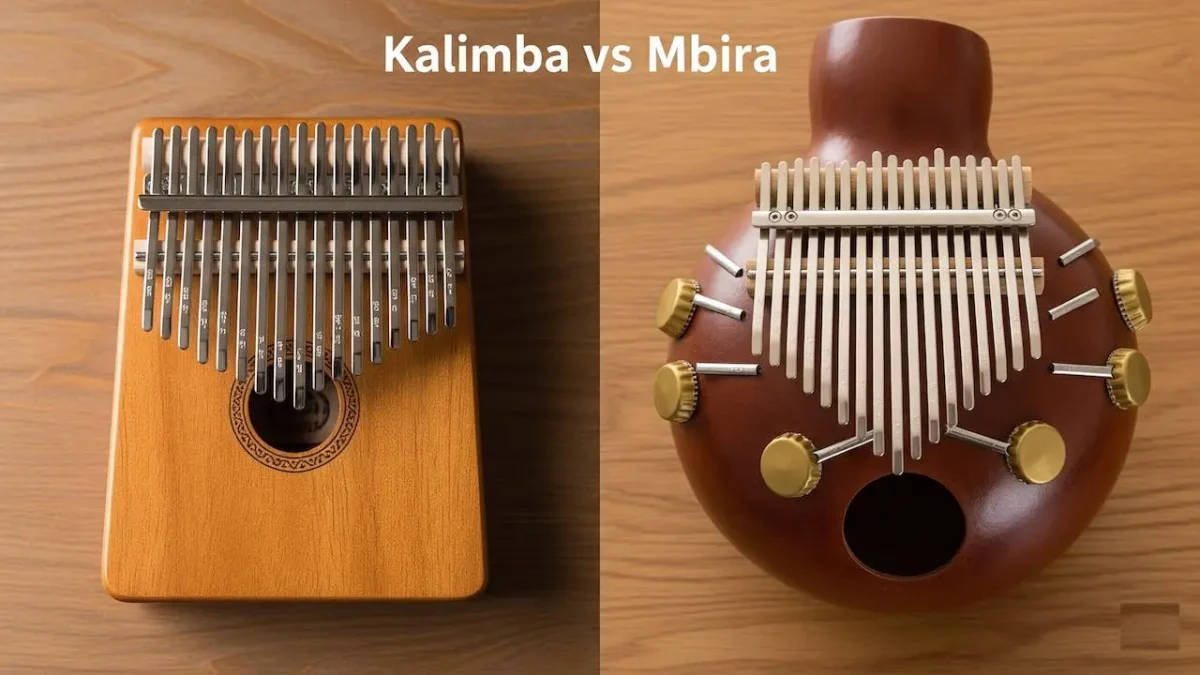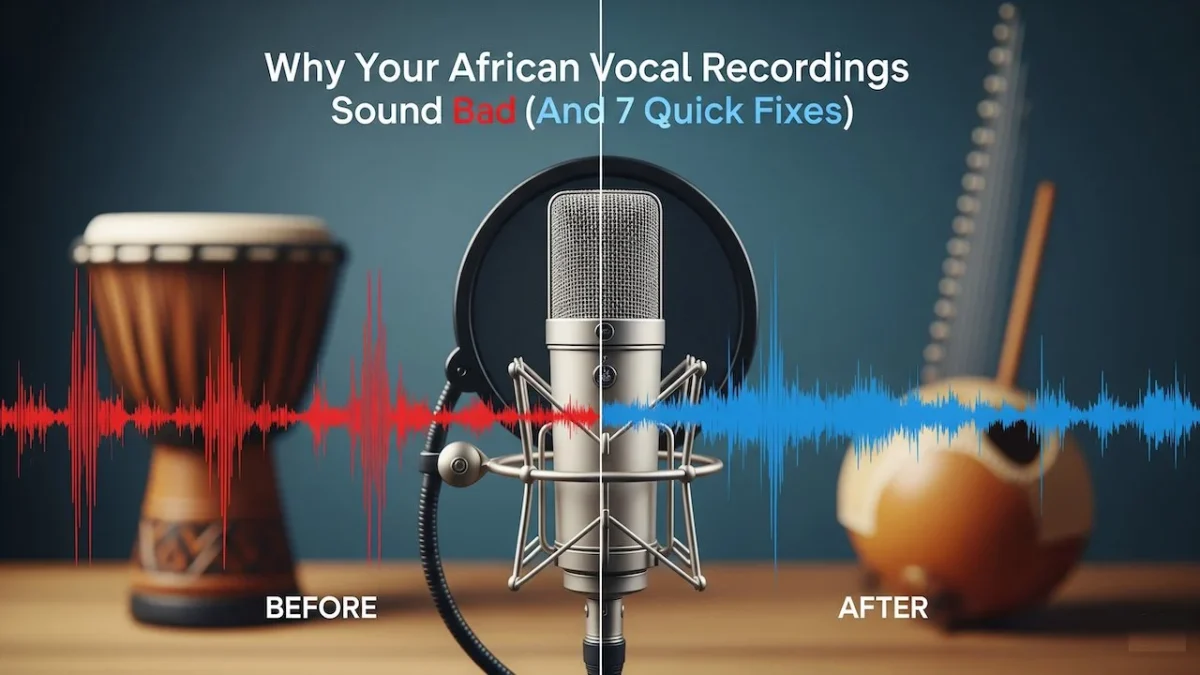
Learning to Play Afro Music: Instruments and Techniques
Learning to play Afro music requires mastering traditional instruments like djembe drums, kalimba, and talking drums through oral tradition, pattern repetition, and understanding polyrhythmic structures. Students begin with basic hand techniques and simple rhythms before progressing to complex interlocking patterns.
How to Start Learning Afro Music
Start learning Afro music by selecting a primary instrument and understanding traditional African musical principles. Many African musical traditions are oral, meaning they are learned through observation, imitation, and repetition. Beginning students should focus on one instrument while developing ear training and rhythmic awareness.
Choose instruments based on your musical goals and physical capabilities. Djembe drums work well for rhythm-focused learners, while kalimba suits those preferring melodic instruments. Talking drums combine both melodic and rhythmic elements for advanced students.
Essential African Musical Instruments for Beginners
African music features five main instrument categories that create the foundation for traditional and modern sounds. Each category serves specific roles in ensemble playing and solo performances.
Percussion Instruments
Djembe drums represent the most accessible entry point for learning African percussion. Take our FREE beginners course ‘How to Play Djembe’ – 6 short and EASY djembe lessons to get you started. These goblet-shaped drums produce three main sounds: bass, tone, and slap.
Talking drums create melodic patterns by changing pitch through tension adjustments. Aim for a quick and controlled motion to create a sharp and distinct high tone. Practice proper hand positioning and beater techniques for authentic sound production.
Melodic Instruments
Kalimba (thumb piano) provides an accessible introduction to African melodies and harmonies. Discover 50+ easy kalimba songs for beginners with tabs to help you quickly learn and play popular tunes. The instrument features metal tines arranged for intuitive playing patterns.
Mbira instruments create complex polyrhythmic patterns while supporting vocal accompaniment. Traditional tunings vary by region, with Shona mbira being most commonly taught worldwide.
Wind Instruments
African flutes, horns, and whistles add melodic color to ensemble performances. Traditional materials include bamboo, wood, and animal horns. Wind instruments often accompany ceremonial music and storytelling traditions.
| Instrument | Difficulty Level | Learning Time | Key Skills |
|---|---|---|---|
| Djembe | Beginner | 2-3 months | Hand technique, rhythm |
| Kalimba | Beginner | 1-2 months | Thumb coordination |
| Talking Drum | Intermediate | 4-6 months | Pitch control, beater technique |
| Mbira | Advanced | 6-12 months | Polyrhythm, traditional patterns |
Traditional Learning Methods for African Music
Traditional African music education emphasizes community participation, oral transmission, and gradual skill development. Master musicians pass knowledge through direct teaching and cultural immersion.
Oral Tradition Approach
Oral tradition forms the foundation of authentic African music learning. Young musicians watch and learn from skilled players within their community, absorbing rhythmic patterns and cultural meanings through repeated exposure. Students memorize patterns without written notation.
Call and response techniques develop listening skills and musical communication. Teachers demonstrate patterns while students echo back progressively complex rhythms. This method builds both technical skills and cultural understanding.
Community Learning Environment
Traditional learning occurs within family groups, villages, and ceremonial contexts. Music serves functional purposes such as work songs, celebrations, and spiritual ceremonies. Students learn appropriate musical roles based on age, gender, and social position.
Group practice sessions allow beginners to participate alongside experienced musicians. Advanced players provide rhythmic foundation while newcomers add simple patterns. This inclusive approach builds confidence and musical sensitivity.
Rhythmic Pattern Development
In African music you will often hear very complex rhythms which involves playing different other rhythmic patterns against each other to create a concrete and rich polyrhythm. Students begin with single rhythmic cycles before layering multiple patterns simultaneously.
Master the basic time feel before adding complex embellishments. Practice steady pulse maintenance while others play contrasting rhythms. Develop independence between hands and coordination with other musicians.
Modern Learning Resources and Methods
Contemporary students access African music instruction through online courses, video tutorials, and structured workshops. These resources combine traditional knowledge with modern teaching techniques.
Online Learning Platforms
Djembe Videos is the world’s largest library of West African percussion. Want to learn djembe and dunun? Join us and get access to tons of rhythms, solos, exercises, scores, information and much more! Digital platforms provide structured progression from beginner to advanced levels.
Interactive features include slow-motion demonstrations, loop functions, and progress tracking. Students can repeat difficult sections and practice at comfortable speeds. Many platforms include cultural context alongside technical instruction.
Private Instruction
We welcome students of all levels beginners to advanced. Lessons take place at Juma Drums (Belgium, Antwerp) by appointment. One-on-one instruction accelerates learning through personalized feedback and custom lesson plans.
Qualified teachers provide immediate error correction and technique refinement. Private lessons address individual challenges and learning styles. Students receive cultural insights unavailable through self-study methods.
Workshop and Masterclass Formats
Intensive workshops offer immersive learning experiences with master musicians. Weekend retreats and summer programs combine technique development with cultural education. Participants learn alongside peers while receiving expert guidance.
International workshops feature authentic teachers from African musical traditions. These events provide networking opportunities and exposure to various regional styles. Many workshops conclude with group performances demonstrating learned material.
| Learning Method | Advantages | Time Commitment | Cost Range |
|---|---|---|---|
| Online Courses | Flexible schedule, replay ability | Self-paced | $20-200 monthly |
| Private Lessons | Personalized feedback, faster progress | 1-2 hours weekly | $50-150 per hour |
| Group Classes | Social learning, ensemble skills | 2-3 hours weekly | $25-75 per class |
| Workshops | Intensive learning, cultural context | Weekend or week-long | $200-800 total |
Fundamental Techniques for African Instruments
Proper technique development ensures authentic sound production and prevents physical injury. Each instrument requires specific hand positions, striking methods, and body mechanics.
Djembe Playing Techniques
Master three basic djembe sounds through proper hand positioning and striking technique. Bass tones require full hand contact near the drum center. Tone sounds use fingertips at the rim edge. Slap sounds combine finger snap with rim contact.
Maintain relaxed wrists and natural hand curvature during play. Avoid tension that restricts movement and creates fatigue. Practice individual sounds slowly before combining them into rhythmic patterns. Develop consistent sound quality across both hands.
Kalimba Finger Techniques
Kalimba playing relies on thumb mobility and strength development. Position thumbs at natural angles without excessive bending. Press tines firmly while maintaining smooth release motions. Alternate thumbs for flowing melodic passages.
Start with simple scales and arpeggios before attempting complex songs. Practice thumb independence by playing different rhythms simultaneously. Build finger strength gradually to avoid strain and injury.
Talking Drum Coordination
Talking drums require coordination between beater hand and pressure arm. Squeeze drum body to raise pitch while striking with opposite hand. Practice pitch bending exercises before attempting melodic patterns. Develop smooth transitions between high and low tones.
Maintain steady rhythm while changing pitches. Use traditional phrases and greetings as practice material. Listen to experienced players and imitate their tonal inflections.
Understanding African Musical Structures
African music employs unique structural principles that differ from Western musical concepts. Students must understand polyrhythm, call and response, and cyclic forms to play authentically.
Polyrhythmic Concepts
Polyphony is the most dominant texture in both African vocal and instrumental music. Multiple rhythmic layers create complex interlocking patterns that support the overall groove. Each musician maintains individual rhythm while contributing to collective sound.
Practice playing simple patterns against different time signatures. Start with two against three relationships before attempting more complex combinations. Use metronomes and drum machines to maintain steady reference pulses.
Call and Response Patterns
Call and response structures organize musical communication between leaders and groups. Solo musicians present musical phrases while ensembles respond with complementary patterns. This format appears in work songs, ceremonial music, and contemporary African popular music.
Practice both leader and follower roles during training sessions. Develop listening skills to respond appropriately to musical cues. Learn traditional call and response patterns from various African musical traditions.
Cyclic Musical Forms
African music organizes around repeating cycles rather than linear song structures. Basic patterns repeat with variations and embellishments throughout performances. Musicians enter and exit the cycle at appropriate moments while maintaining overall continuity.
Master basic cycles before adding personal variations. Understand entrance and exit points for different instruments. Practice maintaining patterns while others add contrasting elements.
Cultural Context and Musical Meaning
African music carries deep cultural significance beyond entertainment value. Understanding traditional contexts enhances authentic performance and cultural appreciation.
Ceremonial and Ritual Functions
Traditional African music accompanies life events such as births, marriages, harvests, and spiritual ceremonies. Each occasion requires specific musical repertoire and performance practices. Musicians must understand appropriate songs and behaviors for different contexts.
Learn the stories and meanings behind traditional songs. Respect cultural protocols when performing sacred or ceremonial music. Avoid inappropriate use of music outside its traditional context.
Social Communication Through Music
African music serves as communication medium, conveying news, history, and social commentary. Talking drums transmit messages across long distances using tonal languages. Praise songs celebrate achievements while work songs coordinate group activities.
Study the relationship between African languages and musical patterns. Understand how tonal languages influence rhythmic and melodic structures. Learn basic phrases in relevant African languages to enhance musical authenticity.
Regional Variations and Styles
African musical traditions vary significantly across geographic regions and ethnic groups. West African styles emphasize complex polyrhythms and ensemble playing. East African music features call and response vocals with simpler rhythmic accompaniment. Southern African traditions combine indigenous elements with outside influences.
Focus on specific regional styles rather than attempting to learn all African music simultaneously. Understand historical and geographic factors that shaped different traditions. Respect the distinctiveness of each musical culture.
Building Practice Routines
Consistent practice develops technical skills and musical sensitivity necessary for authentic African music performance. Effective routines balance technique development, repertoire learning, and cultural study.
Daily Practice Structure
Begin practice sessions with warm-up exercises and technique drills. Spend 10-15 minutes on basic hand positions and simple patterns. Progress to working on specific songs or rhythms for 20-30 minutes. Conclude with free play and improvisation to develop creativity.
Practice slowly and accurately before increasing tempo. Use metronomes to maintain steady timing while developing speed. Record practice sessions to identify areas needing improvement.
Repertoire Development
Build repertoire gradually by mastering traditional songs and rhythms from chosen African musical traditions. Start with simpler pieces before attempting complex compositions. Learn complete songs rather than just rhythmic patterns to understand musical context.
Practice songs in traditional keys and tunings when possible. Understand the cultural significance of learned repertoire. Memorize lyrics and meanings for vocal pieces.
Ensemble Playing Skills
Develop ensemble playing abilities through regular group practice sessions. Learn to listen while playing and adjust to other musicians. Practice following leaders and taking solo roles within group contexts.
Join local African music groups or form practice ensembles with other students. Attend concerts and workshops to observe experienced ensemble interactions. Record group sessions to analyze ensemble balance and timing.
People Also Ask
Kalimba is the easiest African instrument for beginners because it requires only thumb movements and produces pleasant sounds immediately. Most students can play simple songs within days of starting. The instrument is affordable, portable, and doesn’t disturb neighbors during practice.
Basic African music skills develop within 3-6 months of regular practice. Students can play simple rhythms and songs after this period. Advanced proficiency requires 2-5 years depending on instrument complexity and practice consistency. Mastery of traditional repertoire and cultural understanding takes decades.
Reading music is not required for learning African instruments since traditional teaching methods rely on oral transmission. However, some people find it easy to learn by listening and copying new drum patterns by ear and feel. For others it helps to have a visual reference with written notation. Choose learning methods that match your preferred learning style.
Find authentic teachers through African cultural centers, universities with world music programs, and specialized music schools. We offer private music lessons in southern and West-African music on the djembé, bass drum, kalimba, mbira, dance and percussion. Online directories and African community organizations also provide teacher referrals.
Start with basic instrument techniques and simple rhythmic patterns. Master proper hand positions and basic sounds before attempting complex rhythms. Practice steady pulse maintenance and develop listening skills through call and response exercises. Build foundational skills before advancing to ensemble playing.
Frequently Asked Questions
Children excel at learning African music because traditional teaching methods emphasize play, imitation, and gradual skill development. All Around This World classes explore many extraordinary African instruments shaker by shaker, drum by drum! Young students develop natural rhythm and cultural appreciation through age-appropriate activities.
Basic equipment includes your chosen instrument, practice space, and recording device for self-evaluation. Djembe students need a quality drum and comfortable seating. Kalimba players require a well-tuned instrument and songbooks with tablature notation. Advanced students may need additional percussion instruments for ensemble playing.
Cultural understanding enhances authentic performance and prevents inappropriate use of traditional music. Learn the stories, meanings, and proper contexts for songs and rhythms. Respect cultural protocols and avoid using sacred music for entertainment purposes. Cultural knowledge deepens musical expression and audience connection.
Yes, you can learn African music effectively without traveling to Africa through qualified teachers, authentic recordings, and online resources. Many master musicians teach internationally and offer workshops worldwide. However, cultural immersion experiences in Africa provide unmatched authenticity and deeper understanding.
Common mistakes include rushing tempo development, ignoring cultural context, and attempting complex patterns too early. Students often focus on individual technique while neglecting ensemble listening skills. Avoid mixing different African musical traditions inappropriately and respect the distinctiveness of each regional style.



